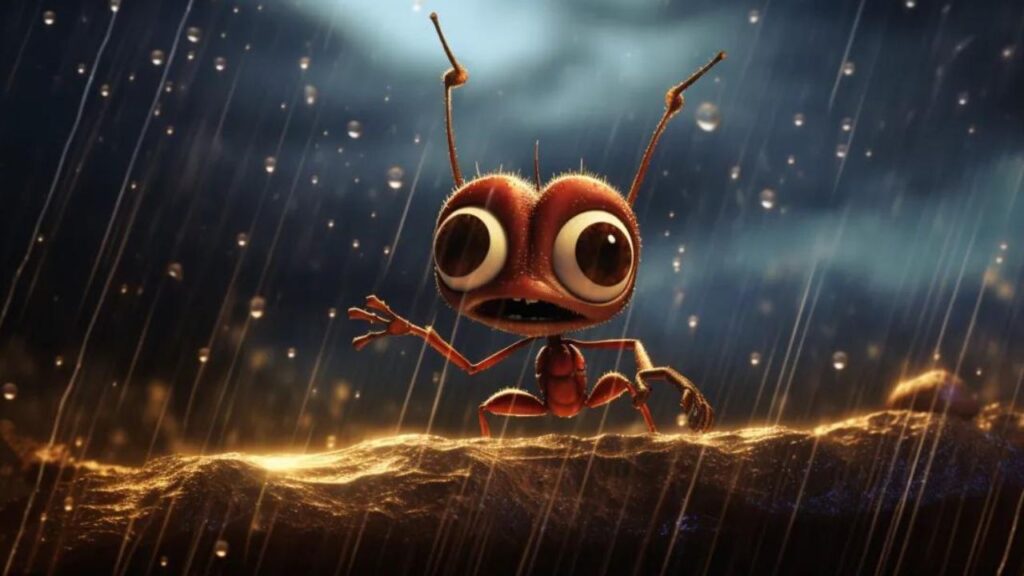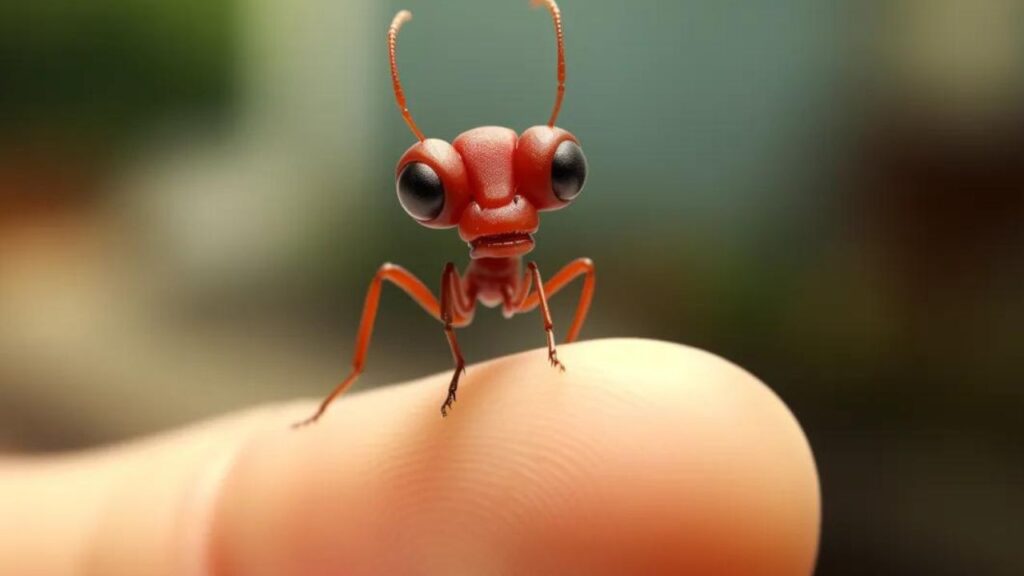TL;DR Summary
Ants are remarkable creatures capable of traveling impressive distances relative to their size. The distance an ant can cover in a day varies greatly depending on species-specific traits, environmental conditions, and the availability of food. Some species, like the Saharan silver ant, can make quick, extensive forays in extreme conditions, while others, such as the army ant, may march up to 200 meters overnight during colony migration. On average, common ant species forage within a few meters up to several dozen meters from their nest. These distances are meticulously measured by scientists using techniques such as mark-release-recapture, observational studies, and advanced technology like RFID tags. Ants’ journeys serve critical purposes, including foraging, colony expansion, and mating. Comparing these small-scale travelers to humans offers us profound lessons in endurance, efficiency, and collective effort. In essence, an ant can travel a distance that is vast and demanding by its standards, showcasing a miniature world of epic journeys that are integral to the survival and prosperity of their colonies.
Ants, the minuscule powerhouses of the insect world, are embodiments of strength, resilience, and mobility. Despite their diminutive size, they are capable of navigating vast terrains in search of sustenance and survival. The mechanics behind an ant’s mobility are a synergy of complex muscular movements and sophisticated chemical signaling. Their six-legged gait allows them to maneuver over a variety of surfaces with precision and stability, making them adept at overcoming obstacles that would seem insurmountable in relation to their size. It’s this incredible mobility that enables them to cover impressive distances, not merely in proportion to their size but also in absolute terms.
The Significance of Daily Travel
For ants, daily travel is not a mere wanderlust; it is a vital component of their existence. Each step taken is a calculated risk in the quest for resources, the expansion of their colonies, or the search for new territories. These daily expeditions are not just for food; they’re strategic missions that can determine the fate of their colonies. The distances traveled during these forays are essential for the dispersion of their progeny, the colonization of new areas, and even the success of their symbiotic relationships with other species. In essence, the survival and prosperity of an ant colony hinge on these daily journeys.
The Scope of Ant Expeditions
The scope of an ant’s expedition can vary widely based on the species, the time of year, and the immediate demands of the colony. Some ants may travel only a few feet away from their nests, while others may embark on treks that span several hundred feet. In relative terms, if we scaled their size to that of humans, these distances would be equivalent to several miles or even marathons! The remarkable aspect of these expeditions is not just the distance but the purpose behind each journey. Whether it’s a lone forager venturing out to gather food or a battalion of workers relocating their home, each trip is a testament to the ants’ collective commitment to their colony’s success.
As we delve deeper into the life of ants, we will discover that these are not aimless wanderers but rather purpose-driven individuals whose every move is a stitch in the fabric of an intricately woven society. Stay tuned as we trace the paths they tread and unravel the mysteries of their remarkable daily marches.
The Biology of Ant Movement

Ant movement is a ballet of biology and physics, an intricate dance that propels these industrious insects across diverse terrains. It’s a combination of anatomical innovation, energy efficiency, and navigational genius that enables ants to traverse distances that are monumental compared to their minute statures.
Anatomy of an Ant’s Leg
Ant legs are marvels of evolutionary engineering. Each ant is equipped with six legs, and each leg is divided into segments connected by flexible joints. This segmentation gives ants the ability to move with precision and grip surfaces with a grip that belies their small size. The coxa, trochanter, femur, tibia, and tarsus work in unison to operate like a natural all-terrain vehicle, propelling the ant forward. The claw at the end of each leg, known as the pretarsus, functions as an anchor, allowing the ant to climb and hold onto surfaces with a steadfastness that would make any mountaineer envious.
Energy and Stamina in Ants
The question of how such small creatures can travel so far is often posed, and the answer lies in their remarkable energy and stamina. Ants have an incredibly efficient conversion of food into energy, which is vital for their endurance. Their bodies utilize carbohydrates from plant nectar and the fats from seeds or insects, converting these nutrients into a slow and steady release of energy. This allows them to undertake lengthy foraging expeditions without the need for frequent rest. Additionally, their exoskeletons minimize water loss, reducing the need for hydration and enabling them to sustain their energy levels over long distances.
Navigation Skills of Ants
Ants are equipped with a sophisticated navigation system that would make any GPS device look primitive. They use a combination of visual landmarks, solar navigation, and chemical trails to find their way. Some species, like the desert ant Cataglyphis, utilize the position of the sun along with a method known as path integration, allowing them to calculate the shortest route back to their nest. Meanwhile, other species lay down pheromone trails, invisible to the human eye but a highway of information for ants, which they use to lead others to food sources or back home. These navigational skills are not just about getting from point A to point B; they are about understanding their environment, remembering it, and communicating it, which is essential for the ant’s daily survival and the colony’s success.
Understanding the biology of ant movement gives us a glimpse into a world where efficiency meets endurance, and where the smallest creatures undertake some of the longest journeys on record. It is in these minute details that we find the grandeur of the natural world, a testament to the fact that size does not define capability.
Factors Influencing Travel Distance

The distance an ant can travel is not a matter of willpower alone; it’s influenced by a tapestry of biological and environmental factors. Each factor plays a significant role in the daily life of an ant and determines the scale of their world.
Species-Specific Traits
In the ant kingdom, diversity reigns supreme. With over 12,000 known species, each has evolved unique traits that influence their travel capabilities. For instance, the nomadic army ants may cover greater distances during their relentless raids than a solitary wood ant would while foraging. The Saharan silver ant, adapted to hot desert life, travels the furthest and fastest during the midday heat when predators are scarce. These species-specific traits, including leg length, muscle strength, and energy storage capacity, are finely tuned to each ant’s ecological niche, dictating the distances they can and must travel for their survival.
Environmental Conditions
The theater of an ant’s daily travels is set by the environmental conditions of their habitat. Ants living in dense forest undergrowth with abundant food sources may only need to travel a few meters for forage, while those in sparse desert environments might journey much farther. Factors such as temperature, humidity, and terrain play critical roles in determining an ant’s travel distance. Rain can spell disaster for pheromone trails, while extreme heat can sap energy. Yet, ants have developed remarkable resilience, with behaviors such as traveling at cooler times of the day or building protective structures, allowing them to overcome these environmental challenges.
Availability of Food Resources
Food is the fuel of the ant world, and its availability is perhaps the most influential factor in their travel. When food is plentiful and close by, ant foraging trails are short. However, when food is scarce or the colony is large and demanding, ants may embark on epic quests that can lead them far away from the nest. The distribution of food resources prompts ants to establish complex foraging patterns, including long-distance trails and intricate communication systems to signal food location to their nestmates. This constant search for food drives the expansion of ant territories and, subsequently, the distances they travel each day.
The interplay between species-specific traits, the ants’ environmental theater, and the quest for sustenance is a fascinating narrative of adaptation and survival. These factors are not just variables in an equation but are dynamic elements that shape the daily lives and evolutionary paths of these remarkable insects. As we explore further, we see that the journey of an ant is a microcosm of life’s journey, marked by the need to adapt, survive, and thrive.
Measuring the Distance: How Scientists Do It

Unveiling the distances ants travel requires meticulous methods and the patience of a saint. As a myrmecologist, I’ve spent countless hours with my eyes glued to the ground, marveling at these insects’ navigational prowess. Here’s a peek into the scientific tapestry that allows us to measure these miniature marathons.
Tracking Techniques in Myrmecology
Myrmecology, the study of ants, has a toolbox of tracking techniques that can range from the straightforward to the technologically advanced. Mark-release-recapture is a classic method where ants are marked with a tiny dot of paint on their thorax and then released back to their colony. By observing their movements and recapturing them later, we can determine how far they’ve traveled. Another method involves the use of landmarks and mapping the ants’ trails as they forage and return to their nests. These methods require patience, precision, and a keen eye for detail.
Observational Studies on Ants
Long-term observational studies are the bedrock of understanding ant travel. By watching and recording ant behaviors over days, weeks, or even months, scientists can gather data on travel distances and foraging patterns. These studies often involve setting up a defined area around an ant colony and systematically documenting the ants’ movements within this space. This can tell us not only about distance but also about behavior, social structure, and interaction with the environment. Observational studies can yield rich, nuanced data that is hard to capture through other means.
The Role of Technology in Tracking
Advancements in technology have revolutionized the way we track ants. Radio frequency identification (RFID) tags, so small that they can be attached to an ant’s back, allow for the automated tracking of individuals without interference. GPS technology, although not applicable for tracking individual ants due to scale, can be used to map larger movement patterns, such as the spread of an invasive species over time. High-resolution video recording and motion-capture software also provide insights into the intricacies of ant movement and interaction. These technological tools have opened new vistas in myrmecology, allowing for the collection of vast amounts of data with greater accuracy and less intrusion.
Through these methods, scientists are able to unravel the mysteries of ant travel, turning every twist and turn of their path into valuable data. With each measurement and observation, we gain a deeper understanding of the ant’s world — a world where even the smallest journey is part of a grand narrative of survival and social complexity.





